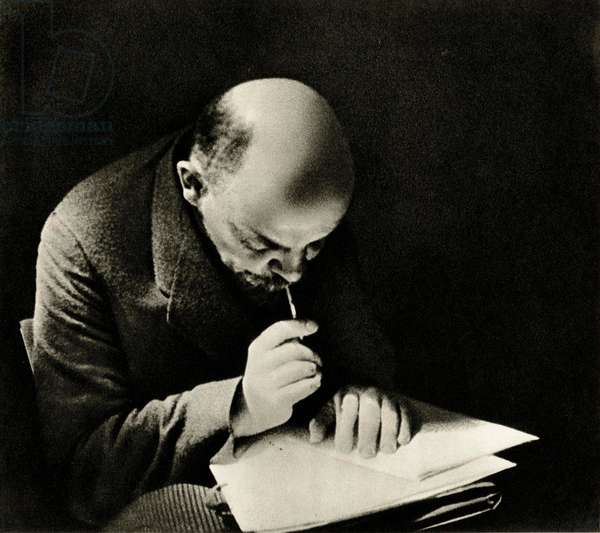I think I need some examples.
An internal contradiction is a contradiction within a system that threatens the system itself. That is to say, when the arguments you use to draw a conclusion are contradictory to the conclusion you draw.
Basically any argument in favour of capitalism will be riddled with internal contradictions. Let’s take a look at capital accumulation:
The idea for capital accumulation is that when wages fall (predominantly through more rigorous exploitation of the global south) then profit will climb. This, so far, is horribly true. However, capitalism demands growth to be considered success (stagnation of profits is considered failure, and even though basic physics tells us that continuous growth is literally impossible, that is, ultimately, the goal of capital accumulation).
In order for there to be continued growth, there needs to be continued consumption. And this is where the internal contradiction comes into play. In order to have maximized profits, wages had to fall. If wages have fallen, then who can afford to consume?
Enter: credit. Banks supply funds for consumption, consumption increases, wages continue to fall, the debt grows and no one can ever afford to pay anything back. The capitalists have lots of money but the money becomes worthless because the banks fail.
https://www.workers.org/2012/us/contradictions_in_capitalism_0223/ (for some more reading)
Internal and external don’t have meanings set in stone. They depend on context and scope.
Consider this. Arundhati Roy wrote a book about the Maoists in Chhattisgarh, India called “Walking with the Comrades”. Maoists mostly help the tribal people in that area to resist against the violent forces of the state. But this is not the only problem they have to tackle. She says that women approached the communist leaders and asked them to help curb some practices that were ingrained in the culture but where problematic and demeaning for the women. The leaders called these internal contradictions.
A contradiction within a contradiction, from what I can tell.
An object or force may be at contradiction with another contradiction, but there are contradictions within contradictions, as Mao said.
Edit 2: I think I missed the point here, but I’ll leave this comment up in case it’s helpful. I answered a question that wasn’t asked, about internal relations.
For Dialectical Materialism (DiaMat), the world is not made of ‘things’, but processes. These processes are constantly changing. Within each process are interconnected and struggling opposites.
DiaMat is the study of how these opposites are internally related. When applying DiaMat, one ‘zooms out’ (abstracts) far enough to see the opposites as interrelated.
Take two people wandering around a work canteen at lunch time. They are separate individuals. Each has her own life. They are externally related. But if we zoom out, we see they are part of the same group, say of medical workers, internally related within a hospital or within the vocation ‘medical practitioners’.
Zoom out further, they are both members of the proletariat. On the world stage, if they are doctors in France, they may also be members of the labour aristocracy.
There is not necessarily any significant contradiction, here. Other than a theoretical contradiction. The concept of ‘identity and difference’ can help us. Each doctor is a different person, yet they are (contradictorily) identical insofar as they are doctors, workers.
The important contradiction appears when we zoom out just enough to see these or other workers within the capitalist system (which is a political economic process).
From here, we can see that the proletariat (as a class) is internally related to the bourgeoisie (as a class). We have to zoom out (abstract) enough to see that without a proletariat, there can be no bourgeoisie. That is, the bourgeois does not exist as a bourgeois unless they are exploiting wage workers for profit.
The bourgeois and proletariat are ‘internally related’ because ‘proletariat’ implies / necessitates the existence of a ‘bourgeoisie’; and a ‘bourgeoisie’ implies / necessitates the existence of a ‘proletariat’. As the one cannot exist without the other, they are ‘internally related’ rather than two separate classes, one external to the other.
Football may provide a more everyday example. Two teams, white and blue, are clearly different teams. White trains and plays in one city, blue in a different city. But in the abstract, they are identical (they are both football teams). And while a single group of players can exist without other groups, it makes no sense to have one team unless there are other teams.
For each professional team, there are players, coaches, a manager, fans, an owner, a stadium, cleaners, groundsmen, etc. They are all internally related. The ‘whole’, the pro team, cannot exist without all of these parts.
There must be two teams to have a match, and even more teams to have a tournament. Within the process of a football match, the two teams are internally related. In a sense, they define each other. Within a tournament or a league, all the teams are internally related and, again, define each other.
We would not talk about the teams in a league as externally related if it is clear they are part of the same league. (We might talk about teams in different countries’ leagues as externally related (blue and gold), because they never cross paths. If they play each other in an international tournament, they are internally related for the purposes of that tournament, because the tournament cannot exist without different participating teams.)
DiaMat makes this type of thinking obvious, by seeing the proletariat and bourgeoisie in the same way as many people view different football teams, internally related within a single unit of analysis – a league, a tournament, or a political economic system.
If you don’t like the sports analogy, we could also look at feudalism, where the feudal lord and the serf are internally related. There is no such thing as a feudal lord without serfs working for part of the week on the lord’s land and fighting in his fyrd (militia) (for free).
Same for slavery. No such thing as a slave without a master. They are internally related within one exploitative process.
The slave-master, lord-serf, manager-player, club-fan, etc are internally related within their respective systems.
DiaMat insists on thinking in this way about everything. Or, rather, about every process. In a way, it is up to the person doing the study to figure out what elements are internally related within whatever process they are studying. Some elements will be more central, and more obviously interconnected than others.
If we zoom out far enough, every process is related. On the planet (e.g. climate), within the solar system (planet-moon-sun). There is no tide on earth without the moon, and no moon (a satellite) without earth. So without the earth, the moon would be a floating rock, and without the moon, the geography of earth would have been completely different.
Ultimately, anything humans could analyse is internally related within the universe. In this sense, it is up to the person doing the studying to decide which relations they want to study, or consider important.
Does this help?
Edit: just realised you said ‘internal contradictions’ rather than ‘internal relations’.
Luckily, the one idea leads from the other. The opposites that are internally related are in contradiction. Following from the above:
I’ve got to log off right now. But can you think of how the following internal relations are contradictory:
- Serf-lord
- Master-slave
- Teams in a sports league




